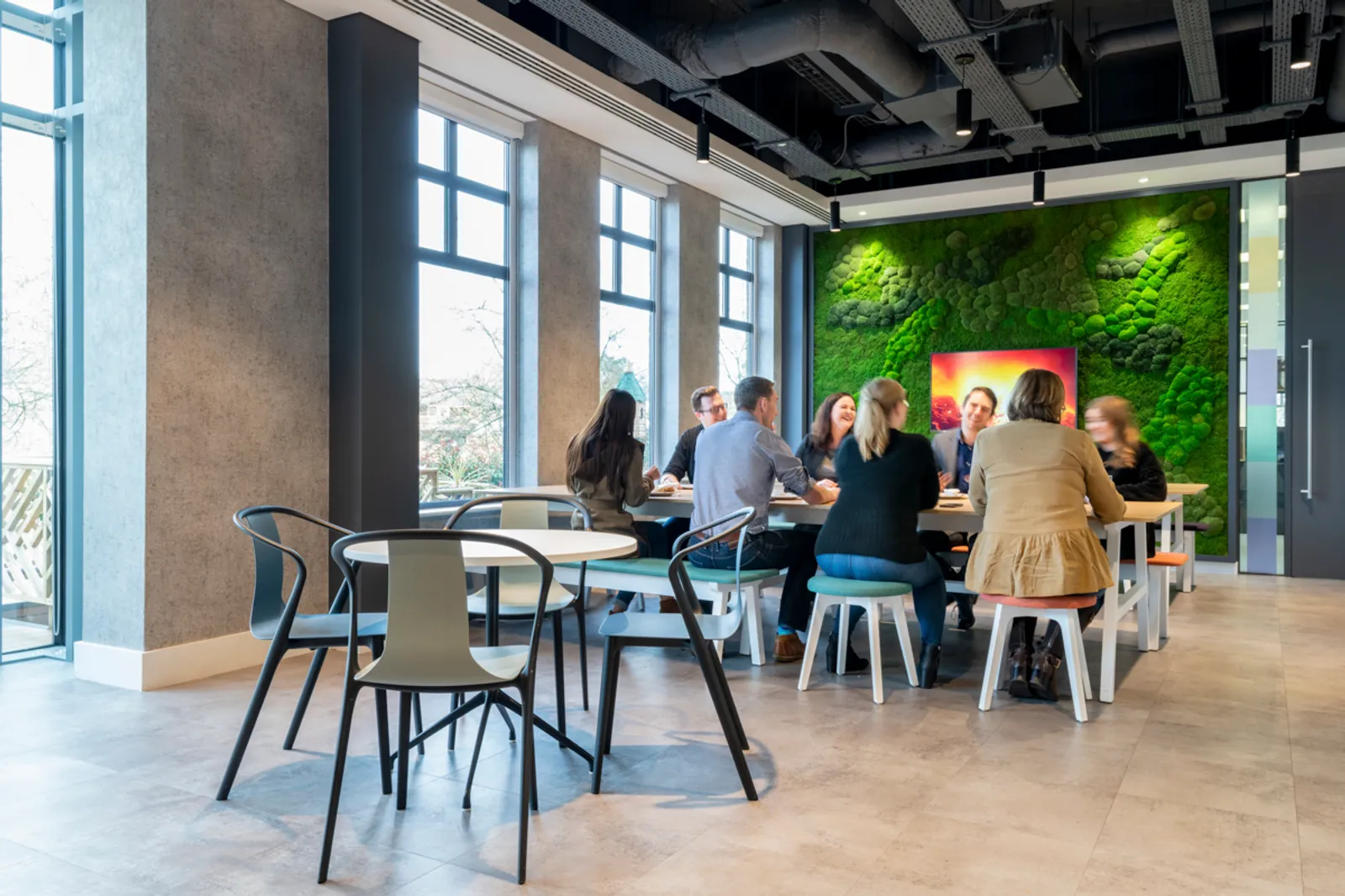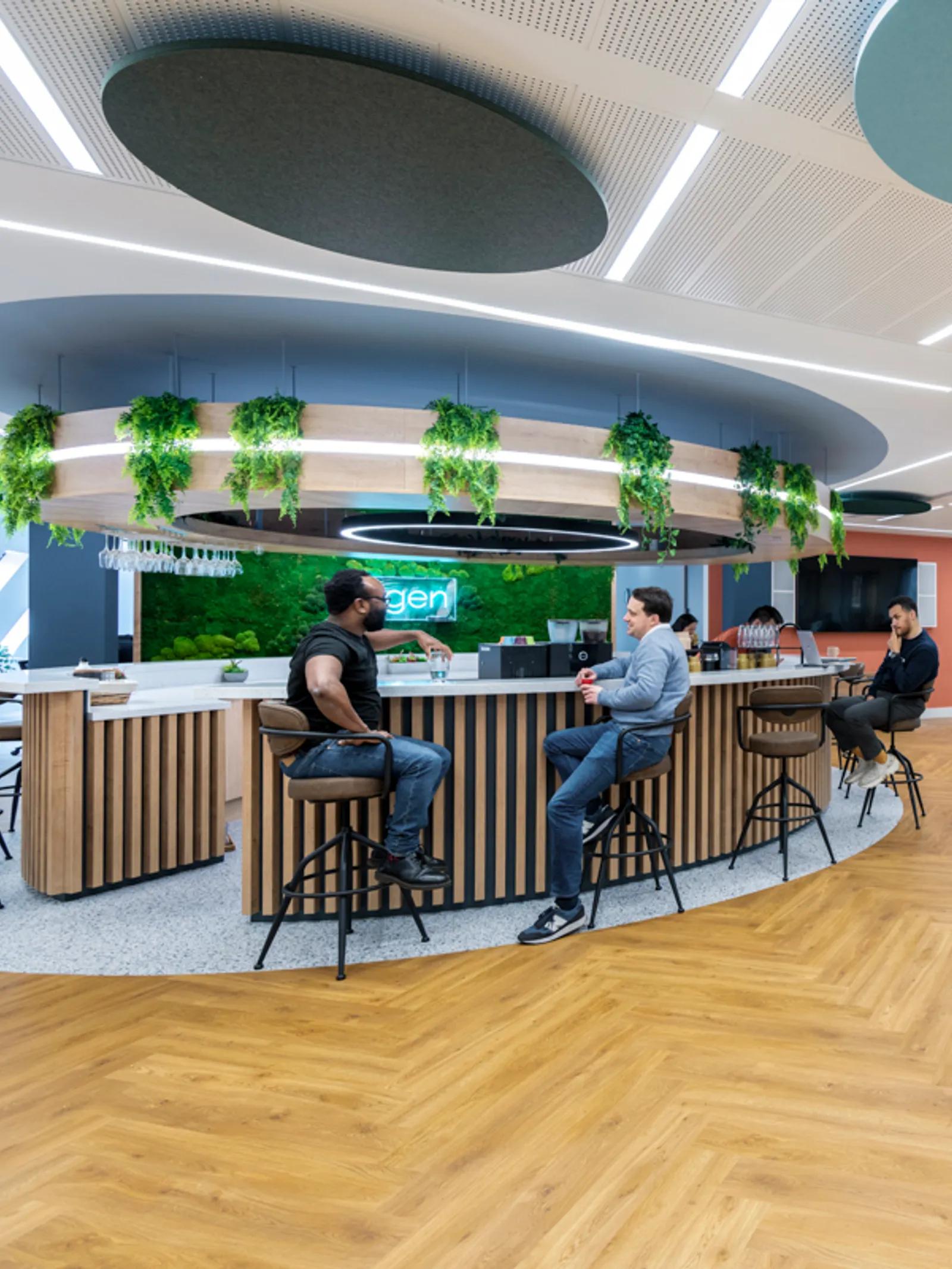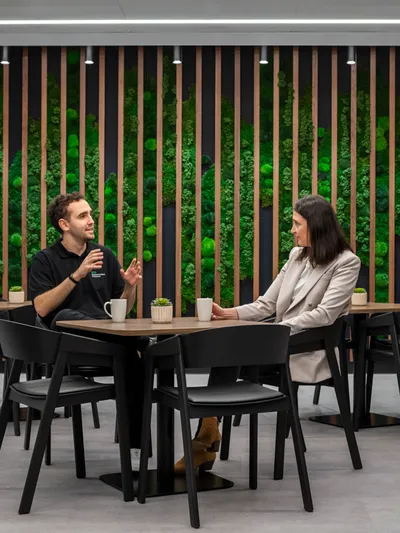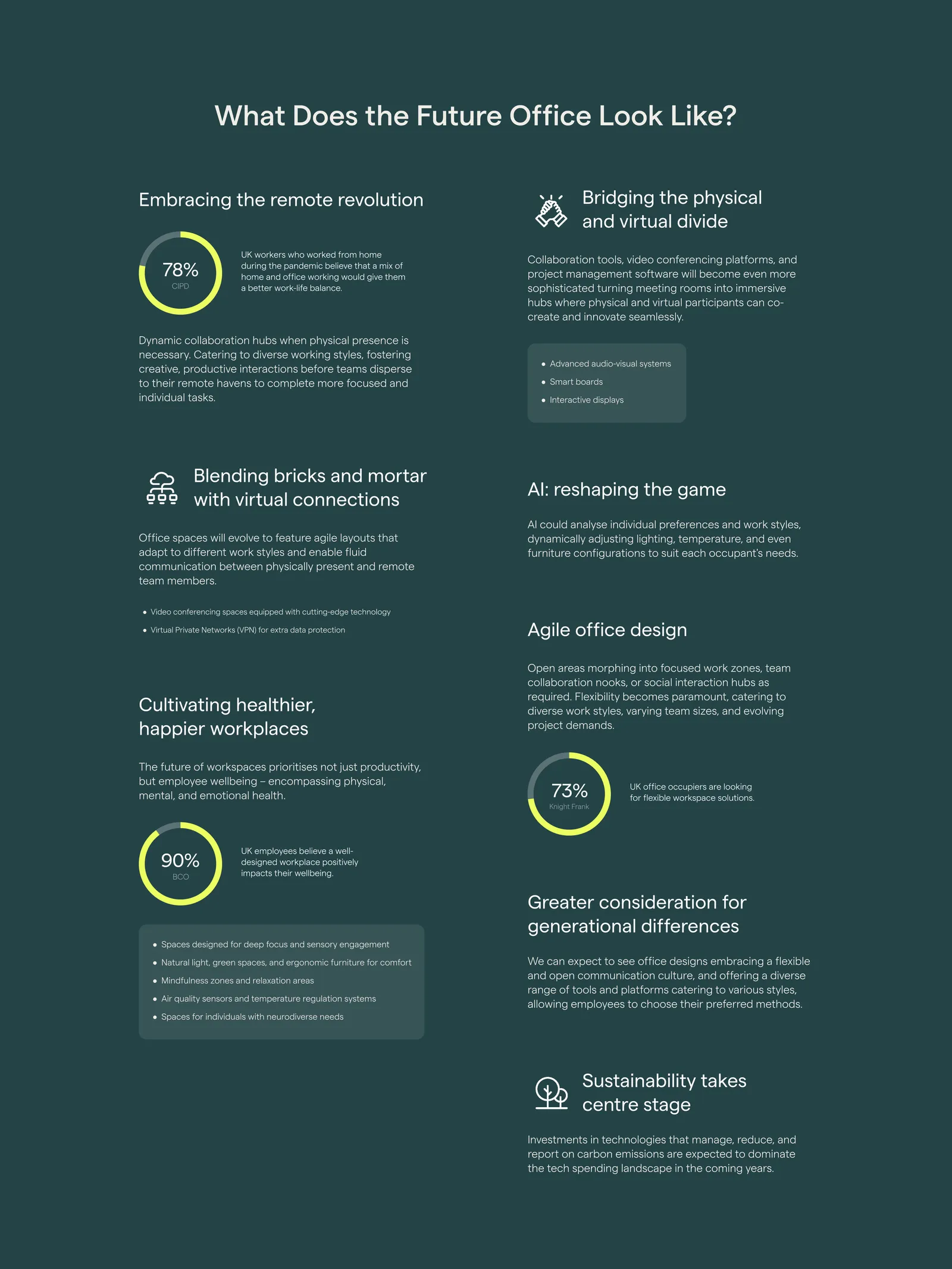
When we consider how far office design has come over the past few decades, we cannot help but get excited when imagining what the future office looks like. Future office design may see some trends evolve, others be replaced by new ones. As technology advances and the way we work adapts, new innovative office design solutions are bound to come about. So what is in store for the future of the office? Here are our predictions.
Beyond cubicles and fluorescents: unveiling the future workspaces
The traditional office, bathed in the sterile glow of fluorescent lights and echoing with the clatter of keys against cubicles, is rapidly dissolving into a kaleidoscope of innovative trends.
The way we work is undergoing a seismic shift, driven by a potent blend of digital advancements, evolving employee preferences, and a heightened focus on wellbeing. Let's embark on a journey to explore the fascinating predictions and trends that are reshaping the office landscape of tomorrow.
Embracing the remote revolution
The COVID-19 pandemic served as a catalyst, propelling remote work from a mere experiment to a mainstream phenomenon. With the pandemic now behind us, normal working patterns have not resumed, and remote working and flexi hours are set to stay, with organisations recognising the benefits of flexibility and reduced overhead costs. 78% of UK workers who worked from home during the pandemic believe that a mix of home and office working would give them a better work-life balance.
This means we can expect to see offices transforming into dynamic collaboration hubs when physical presence is necessary. Imagine touchdown spaces that cater to diverse working styles, fostering creative, productive interactions before teams disperse back to their remote havens to complete more focused and individual tasks.
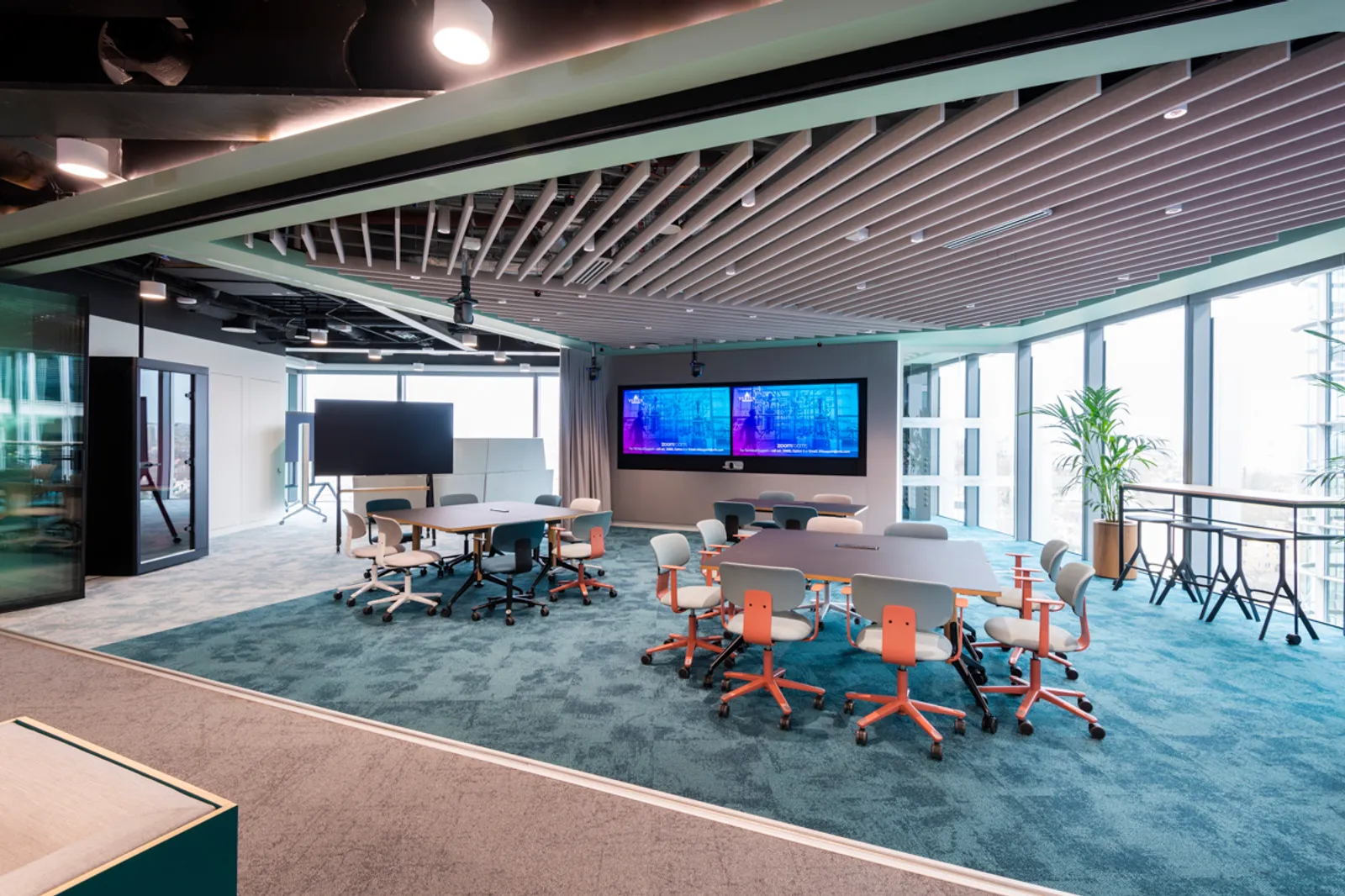
Blending bricks and mortar with virtual connections
Remote work, however, isn't a solitary pursuit. The future of office design embraces hybrid models with a contemporary twist, seamlessly blending remote work with periodic in-person collaboration.
It is important to note that the "hybrid divide," where employee desires for flexibility clash with company demands for in-office presence, threatens the stability of the traditional hybrid work model. Interior designers can bridge this gap by understanding diverse employee needs, enhancing the office experience, and creating flexible, choice-driven workspaces.
Office spaces will evolve to support these models, featuring agile layouts that adapt to different work styles and enable fluid communication between physically present and remote team members. Think video conferencing spaces equipped with cutting-edge technology, fostering seamless interaction that transcends physical boundaries, allowing for productive collaboration, full team engagement and a sense of employee togetherness, however widespread they actually are.
The refreshed hybrid model will ensure cloud-based solutions for storing and accessing files are accessible to all. This empowers employees to access information from anywhere, fostering effortless collaboration and project work across diverse locations. Additionally, cloud storage safeguards data through backups and bolsters disaster recovery capabilities.
Workspaces will also look to secure remote access with Virtual Private Networks. When employees need to access company resources and data remotely, future offices will equip them with a Virtual Private Network (VPN). VPNs act as secure tunnels, encrypting data transmission and providing an extra layer of protection when using public or unsecured networks. This significantly reduces the risk of data breaches, keeping sensitive information safe.
It is worth noting that as central business districts (CBDs) recover from the pandemic, cities are witnessing a rise in connected, multi-use spaces filling the void. In this context, interior design needs to consider the broader urban environment, encompassing surrounding businesses, innovation networks, transportation links, green spaces, and amenities. Drawing inspiration from the cityscape's cultural character can further enrich the design narrative.
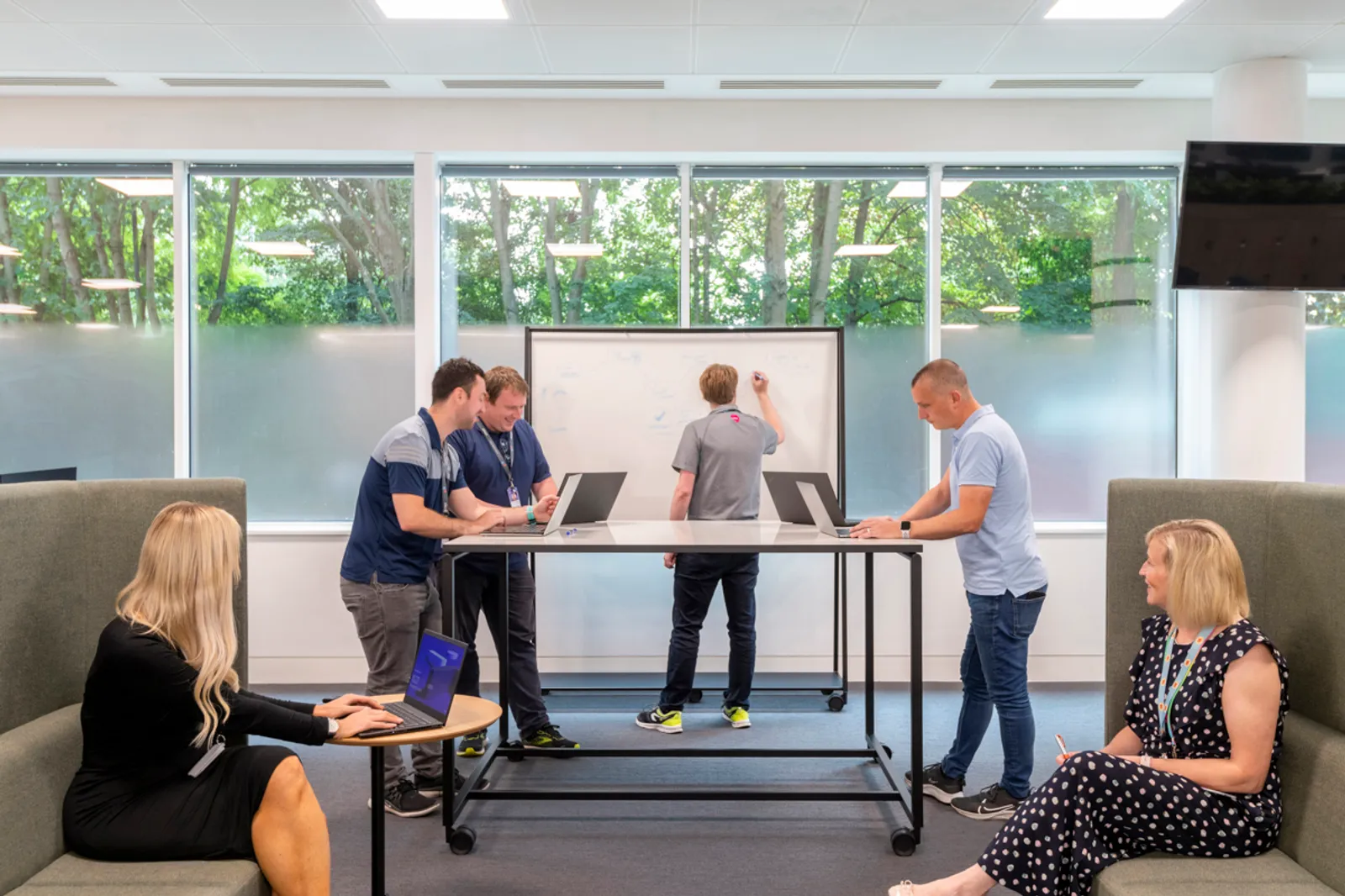
Cultivating healthier, happier workplaces
Many businesses grapple with employee engagement, and seek ways to rekindle passion and focus. Shortened attention spans, characteristic of the short-form video era, require new approaches. Spaces designed for deep focus and sensory engagement can be a solution.
The future of workspaces prioritises not just productivity, but employee wellbeing – encompassing physical, mental, and emotional health. In recent years, a spotlight has shifted onto employee wellbeing and it is set to stay. The British Council for Offices reported that 90% of UK employees believe a well-designed workplace positively impacts their wellbeing.
With a plethora of evidence to support the idea that keeping employees healthy and happy is beneficial to business success, investing in not merely just workforce satisfaction and comfort but workforce joy is something we can expect to see filtering into almost every industry and workplace imaginable. Expect to see natural light flooding every corner, green spaces fostering calm reflection, and ergonomic furniture supporting comfort. Mindfulness zones and relaxation areas will become commonplace, offering havens for rejuvenation. Imagine air quality sensors and temperature regulation systems working in sync, creating an environment that prioritises holistic wellbeing and fuels peak performance.
These types of workspaces will also take into consideration the need for increased inclusivity and cater to the diverse needs of its workforce. This means prioritising spaces conducive for individuals with neurodiverse needs. Again the result will be a shift from open-plan only layouts, known to be overwhelming for some, towards incorporating designated quiet areas, focus rooms, and adaptable workspaces. Additionally, incorporating elements like natural lighting, biophilic design, and noise-cancelling features can contribute to a more stimulating and calming environment for everyone, fostering a more inclusive and productive work environment for all.
Human-Centric design for well-being, placing the worker at the core of the design process and encouraging employee participation is crucial in this fresh new hybrid model. Design firms have a responsibility to champion user needs, fostering a sense of shared identity, community, and sensory well-being within their built environments.
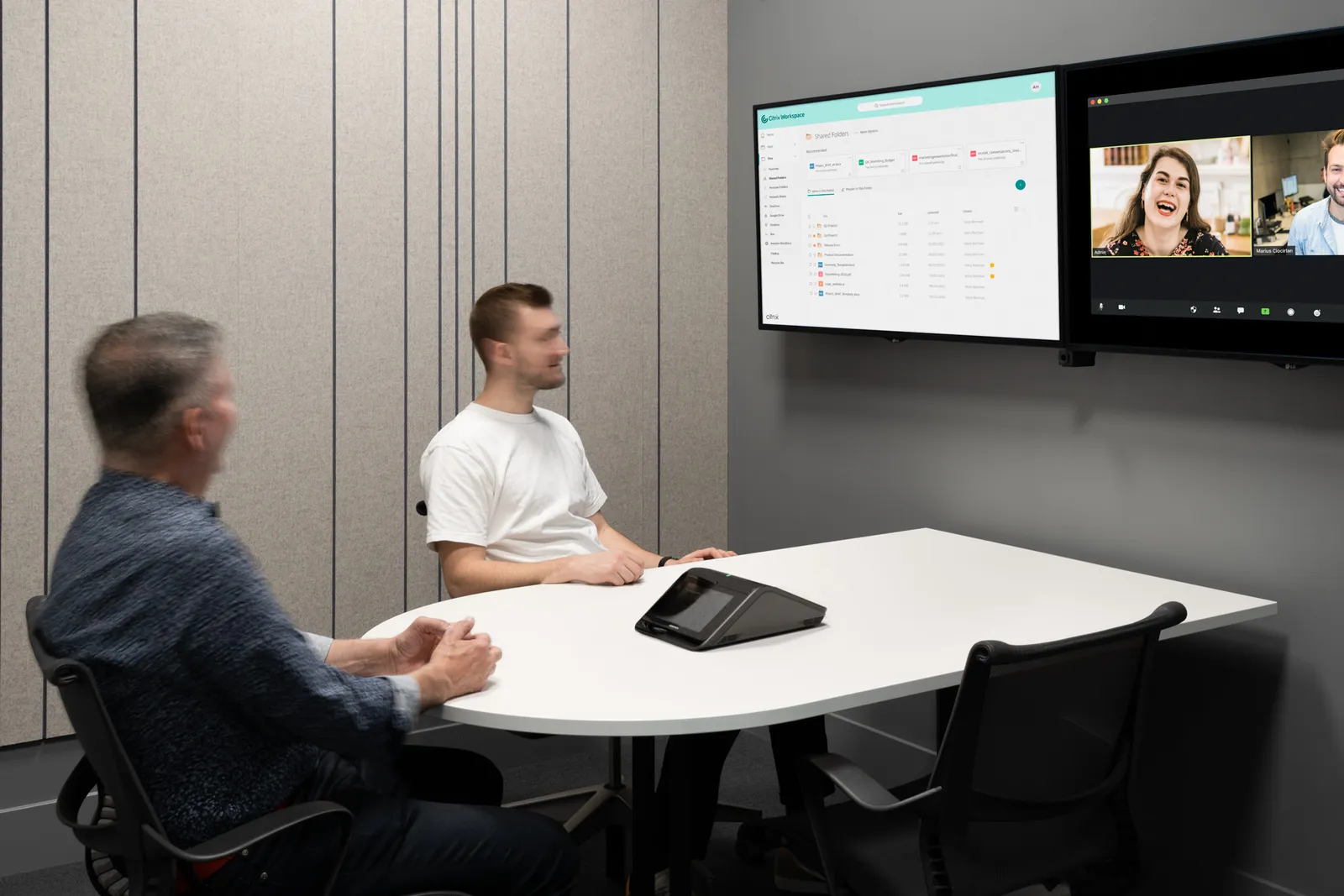
Bridging the physical and virtual divide
Technology remains the cornerstone of seamless collaboration, even in a hybrid world. Collaboration tools, video conferencing platforms, and project management software will become even more sophisticated, ensuring remote and in-office teams operate as a cohesive unit. Advanced audio-visual systems, smart boards, and interactive displays will transform meeting rooms into immersive hubs where physical and virtual participants can co-create and innovate seamlessly.
Businesses are expected to embrace technology that can add significant value to their company. While cost-cutting and efficiency optimisation have long been the driving forces in office design, a new wave of technology adoption is pushing the boundaries towards value creation, risk management, and sustainability. This shift is fueled by a growing recognition that redesigning the workspace can offer much more than just cost savings; it can be a strategic differentiator, unlocking new revenue streams, enhancing occupant experience, and mitigating environmental impact.
AI: reshaping the game
Artificial intelligence (AI) stands out as a game-changer with its transformative potential. Real estate investors and corporate occupiers alike recognise the power of AI-powered technologies to streamline complex tasks, boost productivity, and unlock valuable insights. AI could impact office design in different ways. AI could analyse individual preferences and work styles, dynamically adjusting lighting, temperature, and even furniture configurations to suit each occupant's needs. Imagine walking into an office tailored specifically to your productivity zone, complete with personalised noise cancellation and the perfect ambient music.
Through real-time occupancy data and usage patterns, AI could optimise space allocation in real-time. Meeting rooms morph into collaborative hubs or quiet pods as needed, ensuring efficient use of valuable square footage. No more hunting for an empty conference room!
AI could monitor air quality, ergonomics, and even stress levels, adjusting elements like ventilation and natural light to promote employee wellbeing. Forget rigid desk arrangements; imagine AI designing fluid, biophilic spaces that prioritise comfort and focus.
Agile office design
Agile office design embraces modular furniture and reconfigurable spaces, allowing for quick and easy adaptation to changing needs. Imagine open areas morphing into focused work zones, team collaboration nooks, or social interaction hubs as required. Flexibility becomes paramount, catering to diverse work styles, varying team sizes, and evolving project demands. In a recent survey by Knight Frank, it was found that 73% of UK office occupiers are looking for flexible workspace solutions. Agile office design principles often underpin these solutions.

Greater consideration for generational differences
Varying comfort levels with technology across generations can create a "digital divide" hindering communication and collaboration, and different communication preferences can lead to miscommunication. We can expect to see office designs embracing a flexible and open communication culture, and offering a diverse range of tools and platforms catering to various styles, allowing employees to choose their preferred methods while ensuring seamless collaboration.
Sustainability takes centre stage
The future is green, and workspaces are no exception. Companies are increasingly committed to reducing their environmental footprint, leading to eco-friendly office designs. Not only do consumers want to buy from greener companies, but by committing to sustainability, businesses are more likely to attract and retain top talent too. According to the RICS Sustainability Report, sustainability continues to be an increasingly important factor in choosing office space.
Driven by increasing environmental awareness and regulatory pressures, sustainability has become a top priority for businesses. Investments in technologies that manage, reduce, and report on carbon emissions are expected to dominate the tech spending landscape in the coming years. These solutions go beyond mere cost savings, embodying all pillars of sustainability and empowering companies to achieve their decarbonisation goals, strengthen brand reputation, and attract environmentally conscious employees and customers alike.
Embracing the transformation
The future of workspaces is pulsating with possibilities, driven by trends that prioritise flexibility, collaboration, technology, wellbeing, and sustainability. Companies that embrace these predictions and trends will create workspaces that are not just functional, but inspiring, fostering innovation, productivity, and employee satisfaction. The traditional office may be fading, but in its place rises a dynamic ecosystem that empowers creativity, fuels wellbeing, and redefines how we work in the 21st century.
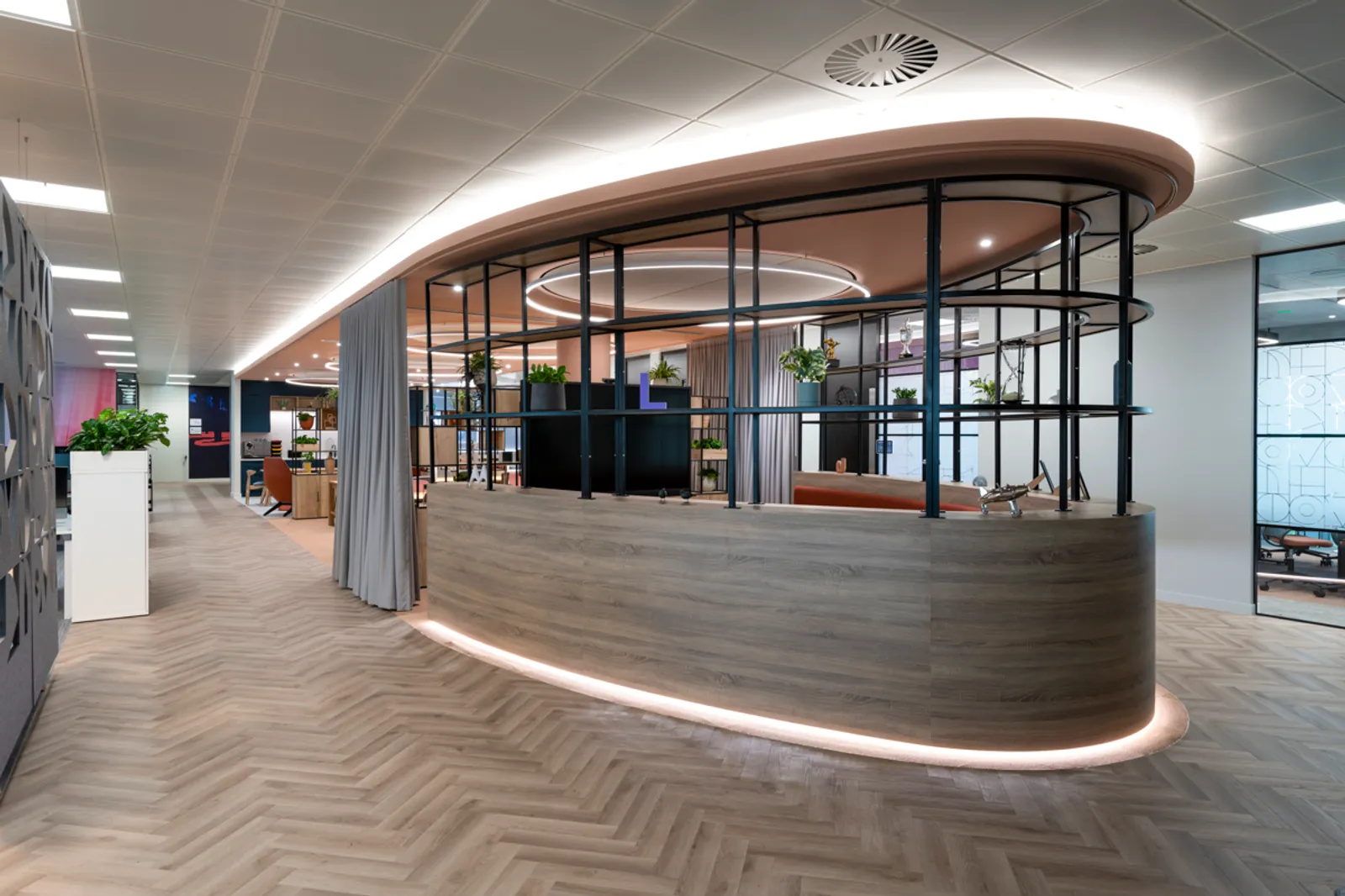
Are you ready to future-proof your workspace?
If you want to redesign your office for the future, contact the professional team at Area today to discover how we can help you create a future-proofed workspace that benefits everyone in your business.
